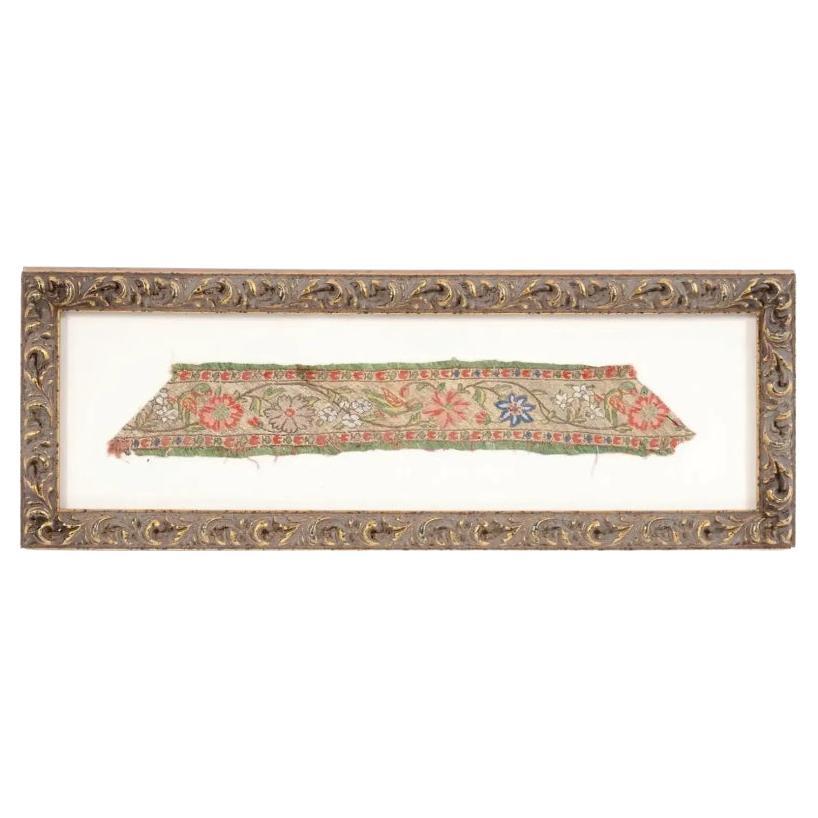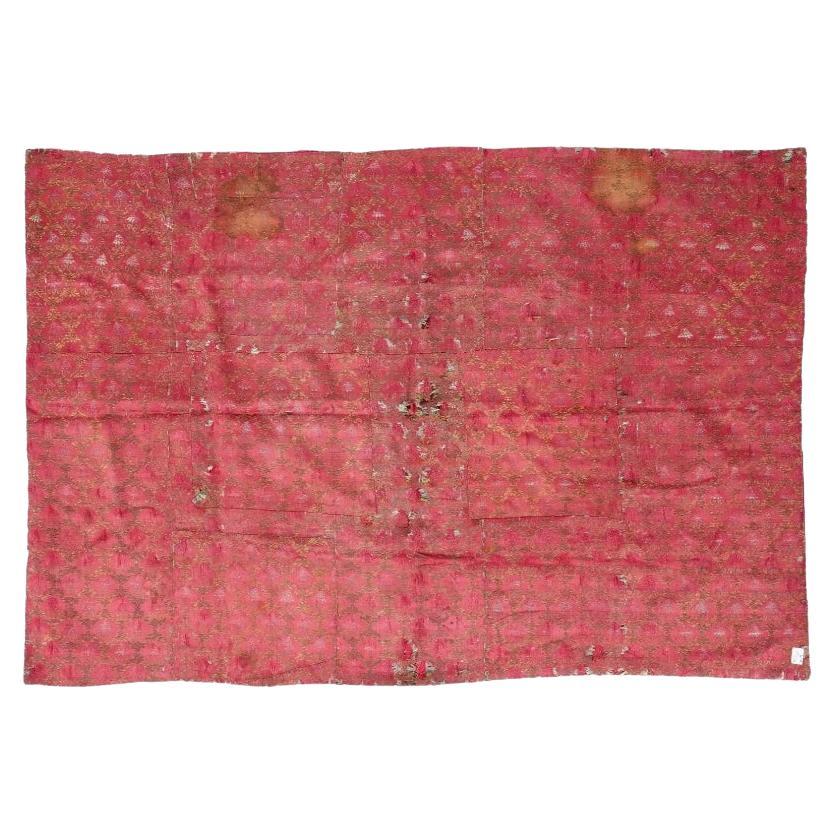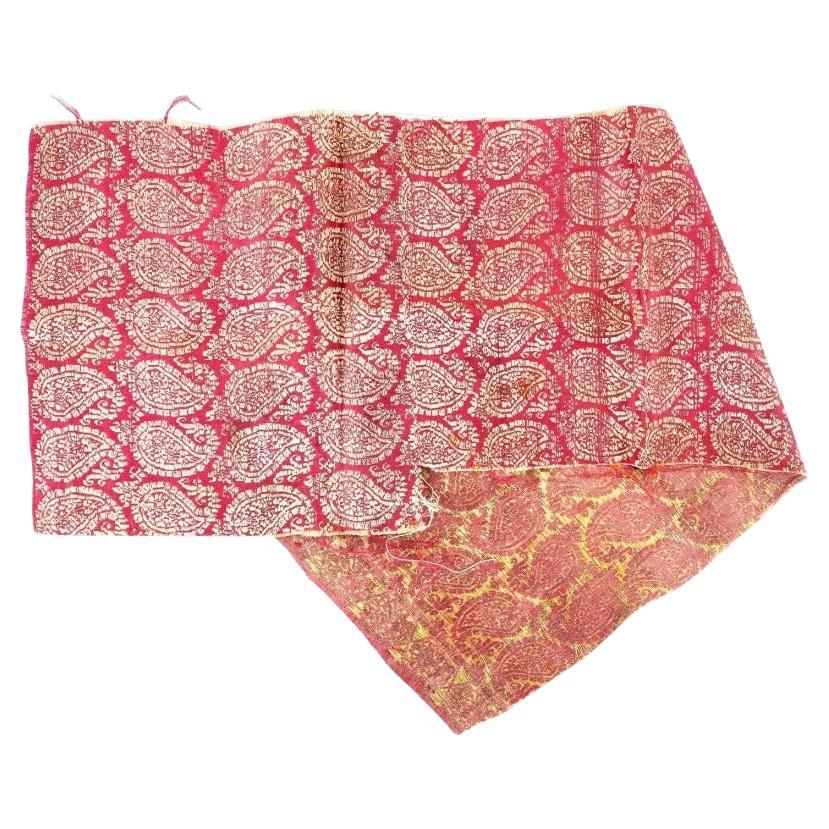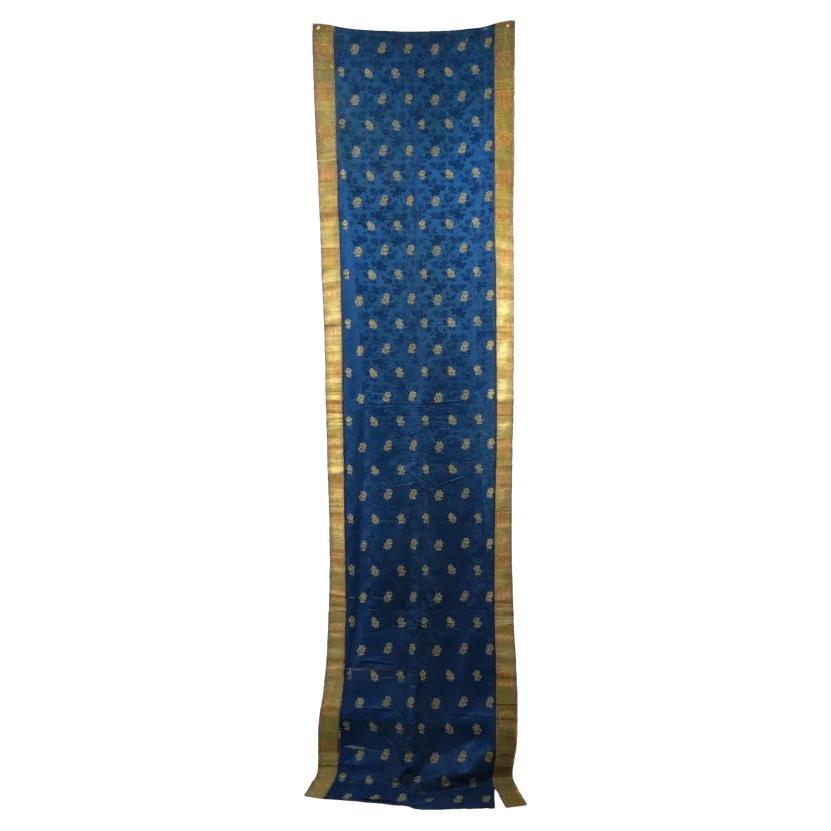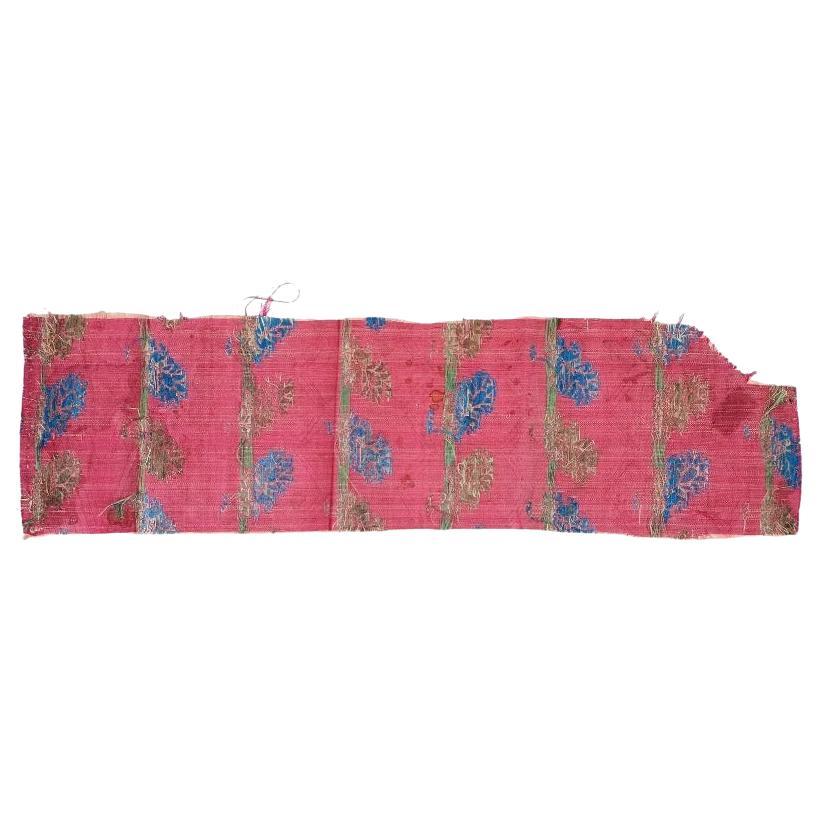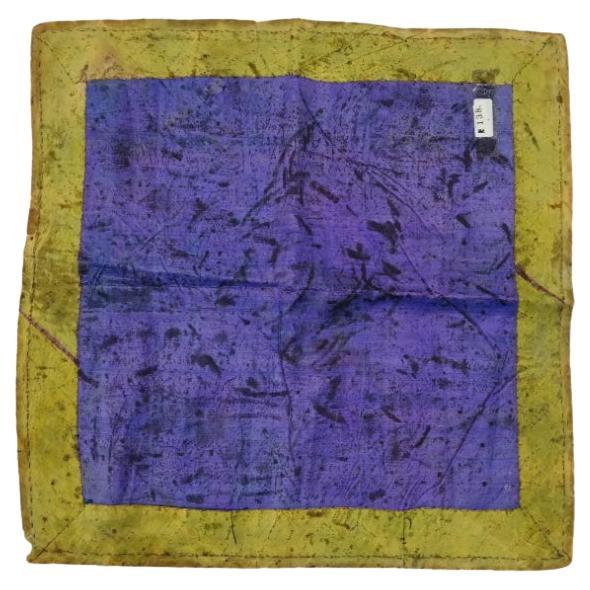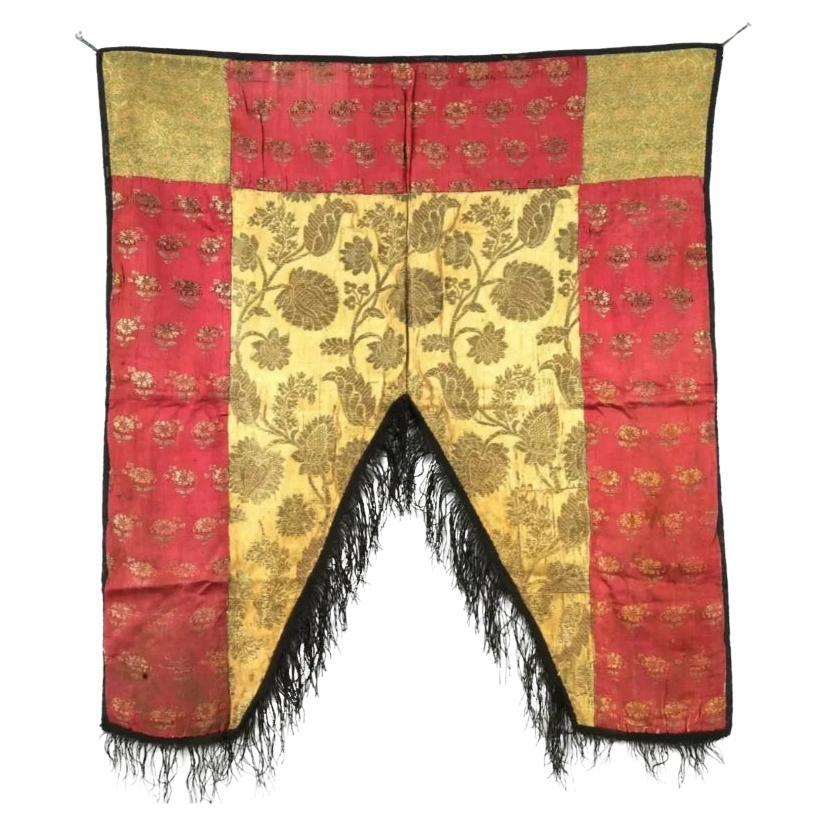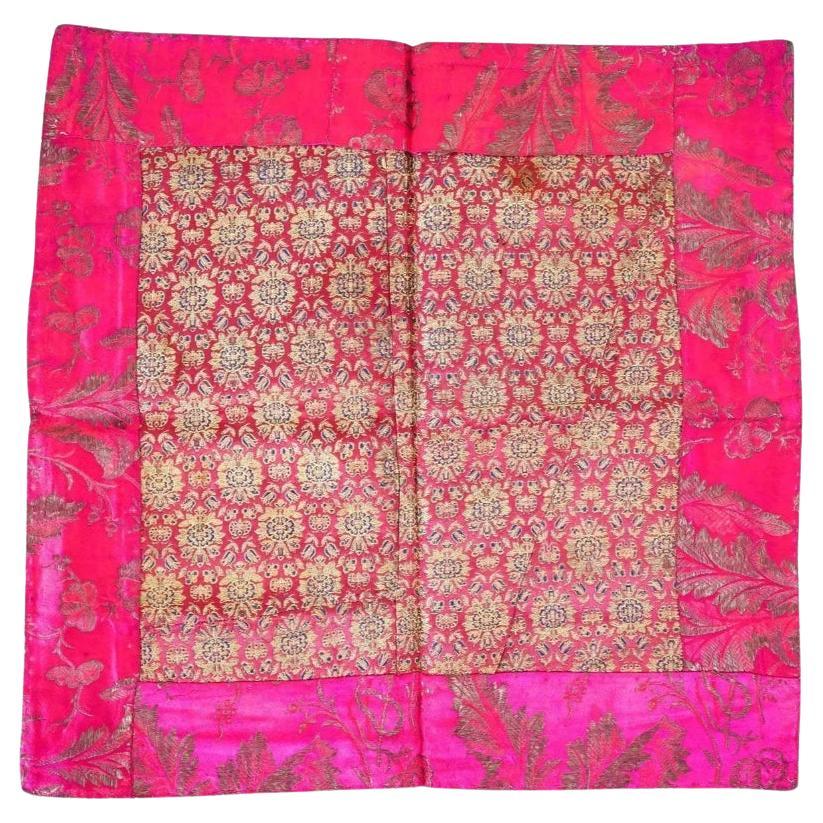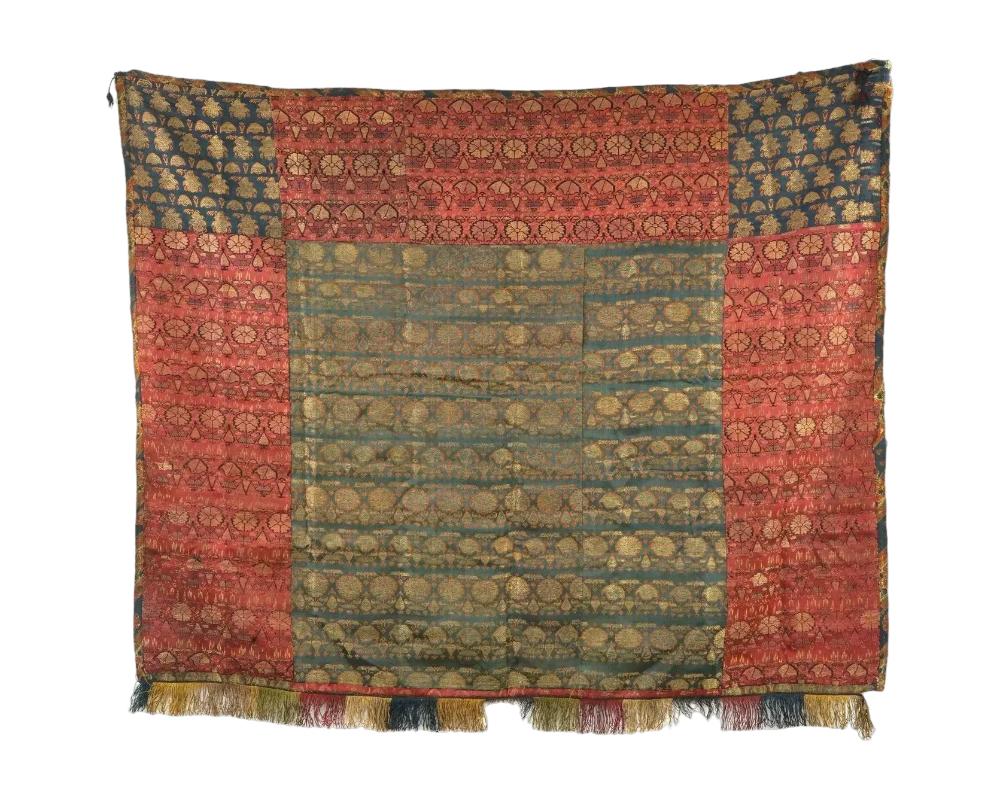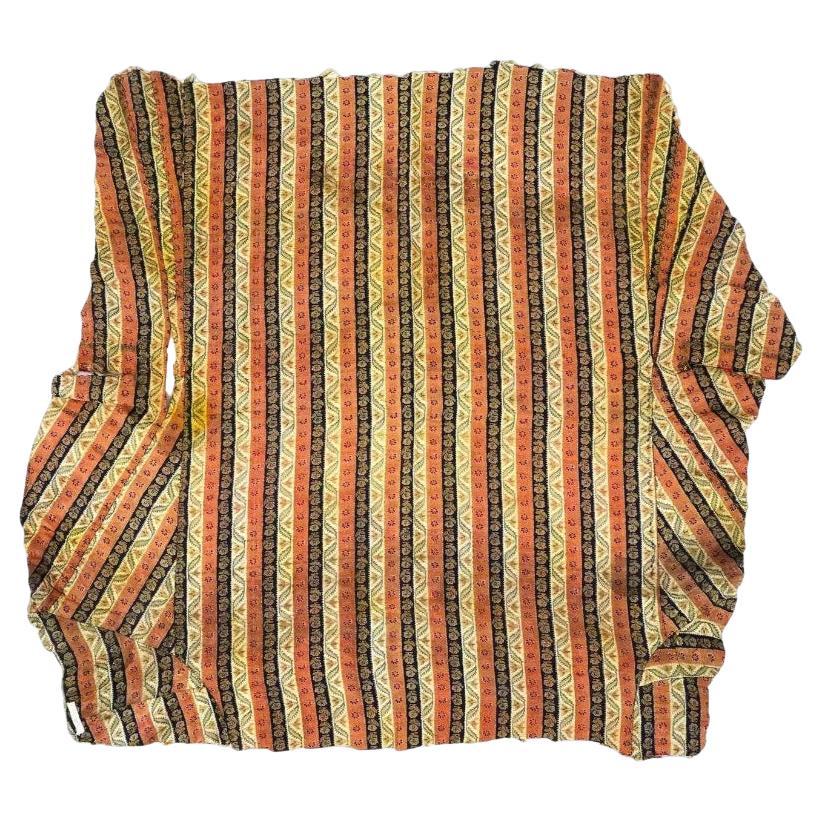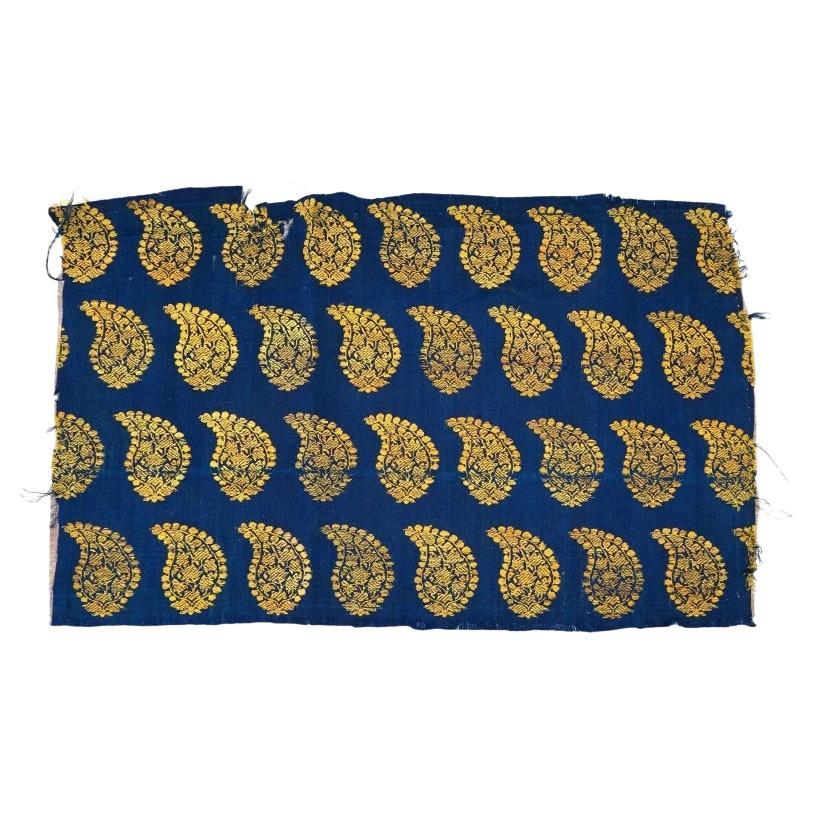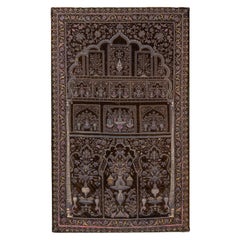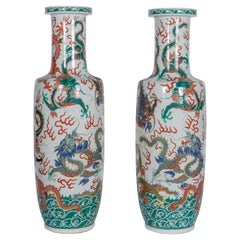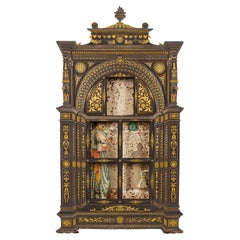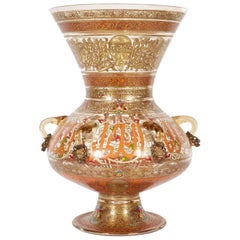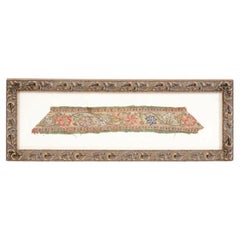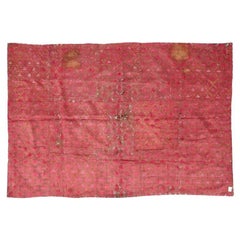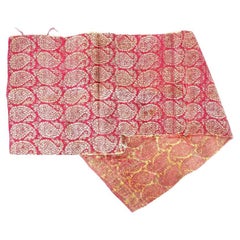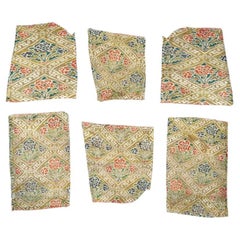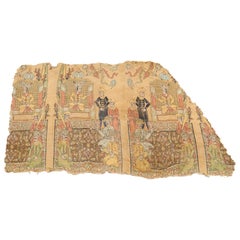
Rare Islamic Persian Safavid Silk Lampas Textile Fragment, Safavid Dynasty
View Similar Items
Want more images or videos?
Request additional images or videos from the seller
1 of 12
Rare Islamic Persian Safavid Silk Lampas Textile Fragment, Safavid Dynasty
$10,000List Price
About the Item
- Dimensions:Height: 11.5 in (29.21 cm)Width: 20 in (50.8 cm)Depth: 1 in (2.54 cm)
- Style:Islamic (Of the Period)
- Materials and Techniques:
- Place of Origin:
- Period:
- Date of Manufacture:circa 1700
- Condition:
- Seller Location:Queens, NY
- Reference Number:1stDibs: f179821603074221303fs
About the Seller
5.0
Vetted Professional Seller
Every seller passes strict standards for authenticity and reliability
Established in 1980
1stDibs seller since 2016
63 sales on 1stDibs
Typical response time: 6 hours
Authenticity Guarantee
In the unlikely event there’s an issue with an item’s authenticity, contact us within 1 year for a full refund. DetailsMoney-Back Guarantee
If your item is not as described, is damaged in transit, or does not arrive, contact us within 7 days for a full refund. Details24-Hour Cancellation
You have a 24-hour grace period in which to reconsider your purchase, with no questions asked.Vetted Professional Sellers
Our world-class sellers must adhere to strict standards for service and quality, maintaining the integrity of our listings.Price-Match Guarantee
If you find that a seller listed the same item for a lower price elsewhere, we’ll match it.Trusted Global Delivery
Our best-in-class carrier network provides specialized shipping options worldwide, including custom delivery.More From This Seller
View AllA Rare 18th Century Middle Eastern Silk and Silver Thread Green Velvet Tapestry
Located in Queens, NY
A Rare 18th Century Middle Eastern Silk and Silver Thread Green Velvet Tapestry.
Presenting a rare and exceptional find, this 18th-century Middle Eastern silk and silver thread gree...
Category
Antique 18th Century Asian Islamic Tapestries
Materials
Silk, Velvet
A Highly Rare Pair of Monumental Qing Dynasty Rouleau Porcelain "Dragon" Vases
Located in Queens, NY
A Highly Rare Pair of Monumental Qing Dynasty Rouleau Porcelain "Dragon" Vases
A Masterful Display of 19th Century Chinese Artistry:
The mid-19th century Qing Dynasty marked a period of artistic innovation and imperial grandeur, as exemplified by this rare and monumental pair of Rouleau vases. These exceptional porcelain works, notable for their commanding size and vibrant palette, are a testament to the unparalleled craftsmanship that flourished during this era. Embellished with a dynamic tableau of dragons rendered in bold hues of red, green, blue, brown, and yellow, these vases embody both artistic brilliance and the deep cultural symbolism woven into Chinese decorative arts.
Artistic Excellence and Symbolism:
At the heart of these magnificent vases lies a visual narrative that channels the power and mystique of the dragon, a central motif in Chinese culture symbolizing imperial authority, strength, and cosmic energy. The intricate depiction of dragons in motion, intertwined amidst stylized ocean waves, conveys a sense of fluidity and dynamic movement. Each color used—the crimson reds, verdant greens, striking blues, earthy browns, and golden yellows—has been meticulously applied, reflecting a mastery of the high-fired, polychrome enameling techniques perfected during the Qing Dynasty.
The Rouleau form, with its cylindrical body, short neck, and slightly flared mouth, was a favored shape for large-scale vases in the 18th and 19th centuries. The form’s structured elegance allowed for expansive decorative panels, serving as an ideal canvas for intricate, multi-layered designs. This pair demonstrates how artisans skillfully balanced the flowing movement of the dragons with the rhythmic motifs of waves, resulting in a harmonious composition that engages the viewer from every angle.
Craftsmanship and Technique:
These vases represent the pinnacle of porcelain artistry achieved under the Qing Dynasty, showcasing techniques that reflect centuries of refined craftsmanship. The precision in the application of overglaze enamels and the expert manipulation of kiln temperatures to achieve vibrant and consistent coloration are indicative of the expertise within the imperial kilns. The dragons' scales, rendered with remarkable detail, create a textured effect that contrasts beautifully with the smooth, undulating waves, enhancing the three-dimensional quality of the design.
The depth of color and the crisp delineation of each element point to a rigorous and time-intensive process. These qualities signify the involvement of highly skilled artisans who adhered to the imperial standards set by the royal court, ensuring that each piece was a fitting representation of the empire’s wealth and cultural prowess.
Historical and Cultural Significance:
Vases of this caliber were not merely decorative; they were imbued with profound symbolic meaning and often commissioned for imperial use or gifted as prestigious diplomatic offerings. The dragon motif, deeply embedded in Chinese folklore and philosophy, was associated with the emperor himself—known as the "Son of Heaven"—and symbolized his divine right to rule. These vases also reflect the Qing Dynasty's flourishing export trade and the global fascination with Chinese porcelain during the 19th century. European collectors and royal patrons prized such pieces for their artistry and the exoticism they represented, contributing to a legacy that elevated Chinese porcelain to a revered status in the annals of decorative art history.
Provenance and Collectability:
The extraordinary scale, exceptional craftsmanship, and rarity of this pair establish them as museum-quality works. Such vases would have held a place of honor in a palace or wealthy estate, reflecting not only the owner’s status but also an appreciation for the profound cultural and artistic traditions of China. Their provenance—potentially tied to an imperial commission or significant historical collection—underscores their importance as objects of study and admiration.
Provenance:
Private American Collection, acquired in London, circa 1905.
Thence by descent to the current owners
Solomon Treasure...
Category
Antique Mid-19th Century Chinese Qing Ceramics
Materials
Porcelain
Placido Zuloaga, an Extremely Rare Spanish Gold and Silver Damascened Frame
By Plácido Zuloaga 1
Located in Queens, NY
Placido Zuloaga, An extremely rare Spanish gold and silver damascened window frame, in the Alhambra / Islamic taste, circa 1880.
The interior is lined and fitted with an orientalist artwork throughout.
Signed PZ on the reverse.
Placido Zuloaga was a renowned Spanish metalworker and damascene artist known for his exceptional skills in working with gold and silver and for creating intricate and ornate designs on metal surfaces using a technique called damascening.
One of Zuloaga's works is this rare gold and silver damascened frame that he created in the late 19th century. The frame is decorated with intricate designs in silver and gold, creating a stunning contrast that is characteristic of Zuloaga's work.
The frame is a remarkable example of Zuloaga's artistry and skill, as well as his mastery of the damascening technique. The technique involves inlaying silver or gold wire into the surface of the metal, creating intricate and detailed designs that are both beautiful and durable.
Zuloaga's work was highly sought after during his lifetime and is still highly valued today. His pieces are considered to be some of the finest examples of damascene artistry in the world, and his legacy continues to inspire and influence metalworkers and artists today.
His works are in private collections and in museums worldwide.
Comparative Literature:
James D. Lavin, The Art and Tradition of the Zuloagas, Spanish Damascene...
Category
Antique 19th Century Spanish Islamic Picture Frames
Materials
Steel, Iron
Rare French Enameled Mamluk Revival Glass Mosque Lamp by Philippe Joseph Brocard
By Philippe-Joseph Brocard
Located in Queens, NY
A rare French enameled Mamluk Revival (Islamic) glass mosque lamp / lantern by Philippe-Joseph Brocard, late 19th century.
Measures: 14" high x 11" wide
Signed Brocard Paris.
...
Category
Antique Late 19th Century French Islamic Lanterns
Materials
Enamel
Claude Lalanne (French, 1925-2019) A Rare Pink Silk and Bronze Ginkgo Bag
By Claude Lalanne
Located in Queens, NY
Indulge in the enchanting world of Claude Lalanne with the exquisite Ginkgo Handbag, a wearable masterpiece from Lalanne's iconic Ginkgo collection. Crafted with unparalleled artistr...
Category
20th Century French Collectible Jewelry
Materials
Bronze
$39,200 Sale Price
20% Off
A Rare 1859 Elkington Silvered Bronze Victorian "Trophy" Centerpiece
By Elkington Mason & Co.
Located in Queens, NY
A Rare and Historic 1859 Elkington Silvered Bronze Victorian Centerpiece with Cut-Glass Bowl.
Presenting a magnificent Victorian silvered bronze centerpiece of unmatched rarity and importance, crafted by the renowned Elkington Mason & Co., Birmingham, in 1859. This exceptional work, complete with its original cut-glass bowl, epitomizes 19th-century British craftsmanship and artistry. Hallmarked to the base, this centerpiece showcases intricate sculptural details, embodying a high level of technical prowess and aesthetic refinement characteristic of Elkington's celebrated works.
The centerpiece's striking design features three meticulously rendered figures—a young hunter, a friar, and a fishmonger—each embodying elements of Victorian life and industry. At their feet, a loyal spaniel and various game highlight the naturalistic approach to the composition, enhanced by the masterful chasing and dynamic form. This sculptural ensemble rests on an elaborately decorated base, exuding both grandeur and narrative depth.
Adding profound historical value are two engraved plaques. The first, dated “January 28, 1859,” reads: “Presented to William Johnson Esq. as a token of respect & esteem by the workpeople in the employ of Messrs Richard Johnson & Brother, Manchester.” The second, an inscription from 1941, states: “Worshipful Company of Tin Plate Workers, Alias Wire Workers of the City of London, Presented by Arthur Laurence Johnson M.A., Grandson of William Johnson, both Wire Workers, with his Daughter Eleanor Morton Johnson, a Freeman of the Company, to commemorate his Mastership 1941-42.”
These inscriptions chart a rich lineage, connecting the Johnson family to pivotal moments in industrial history. William Johnson, alongside his brother Richard, assumed leadership of a wire-drawing firm in 1838, which would later become Richard Johnson & Nephew Ltd. Their contributions included providing galvanized armored wire for the historic 1857 transatlantic telegraph cable...
Category
Antique 19th Century British Victorian Centerpieces
Materials
Metal, Bronze
You May Also Like
Antique Persian Safavid Silk Textile Fragment
Located in Long Island City, NY
An antique Persian fragment of textile tapestry. Late Safavid dynasty, 18th century. Floral pattern in red and green. Canvas mat, golden frame. Collec...
Category
Antique 18th Century Unknown Textiles
Materials
Textile
$275 Sale Price
44% Off
Antique Persian Safavid Dynasty Embroidered Textile
Located in Long Island City, NY
An antique Persian Iranian Safavid dynasty hand embroidered textile wall hanging with lining. The textile is adorned with a traditional foliage ornament. Circa: 17th century to 18th ...
Category
Antique 17th Century Unknown Textiles
Materials
Textile
Antique Persian Safavid Dynasty Embroidered Textile
Located in Long Island City, NY
An antique Persian Iranian Safavid dynasty hand woven embroidered textile wall hanging. The textile is adorned with a traditional paisley ornament. Circa: 17th century to 18th centur...
Category
Antique 17th Century Unknown Textiles
Materials
Textile
Antique Persian Safavid Hand Woven Textile Fragments
Located in Long Island City, NY
A group of three antique Persian Iranian Safavid dynasty hand woven embroidered textile fragments, circa 17th century, showcase the dynastys intricate craftsmanship. The design featu...
Category
Antique 17th Century Unknown Textiles
Materials
Textile
Large Antique Persian Safavid Dynasty Woven Textile
Located in Long Island City, NY
An antique Persian Iranian Safavid dynasty hand woven embroidered textile wall hanging. The textile is adorned with floral and foliage ornaments. The ware is decorated with blossomin...
Category
Antique Late 17th Century Unknown Textiles
Materials
Textile
Antique Persian Safavid Dynasty Hand Woven Textile
Located in Long Island City, NY
An antique Persian Iranian Safavid dynasty hand woven textile wall hanging. The textile is adorned with a traditional foliage ornament. Circa: 18th century. Safavid Iran or Safavid P...
Category
Antique 18th Century Unknown Textiles
Materials
Textile
Recently Viewed
View AllMore Ways To Browse
Islamic Safavid
Lampas Silk
Antique Chinese Silk Embroider
Marriage Bed
1970 Kaftan Moroccan
Printing Block Asian
Vintage Hand Embroidered Table Cloth
Moroccan Caftans
Moor Bust
Indonesian Batik
Embroidered Silk Robe
Kimono Meiji
Moroccan Kaftan Brocade
Antique Chinese Silk Robes
Antique Embroidered Persian Textiles
Ikat Indonesia
Indonesian Ikat
Vintage Silk Embroidered Fabric
